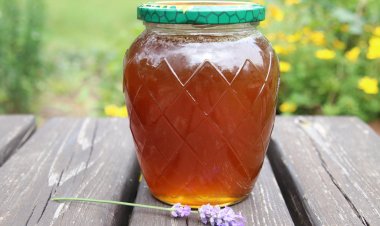Global Dairy Ingredients Market: Trends, Growth, and Future Outlook to 2030
Explore the global dairy ingredients market, including size, growth drivers, product segmentation, applications, regional insights, and future forecasts. Discover key trends and innovations shaping the industry through 2030.

Key Takeaways
- The global dairy ingredients market is projected to grow from USD 66.09 million in 2022 to USD 110.19 million by 2030, at a CAGR of 6.60%.
- Market growth is driven by rising demand for functional foods, health-conscious consumer trends, and expanding applications in food, beverage, pharmaceutical, and animal feed industries.
- Major players include Fonterra, FrieslandCampina, Arla Foods, and Lactalis, who are investing in innovation and sustainability.
- Product segmentation includes milk powders, whey proteins, casein, lactose, and specialty ingredients, with whey proteins and milk powders leading in usage.
- Asia-Pacific is the fastest-growing region, while Europe and North America remain dominant markets.
- Future growth will be shaped by clean-label trends, plant-based alternatives, and technological advancements in ingredient processing.
Global Dairy Ingredients Market Overview
The Global Dairy Ingredients Market is experiencing robust growth, underpinned by evolving consumer preferences, technological advancements, and expanding applications across multiple industries. According to analysts at Vantage Market Research, the market was valued at USD 66.09 million in 2022 and is expected to reach USD 110.19 million by 2030, registering a compound annual growth rate (CAGR) of 6.60% during the forecast period. This impressive trajectory is a testament to the increasing demand for dairy-derived ingredients, which are prized for their nutritional value, functional properties, and versatility.
Several key drivers are fueling this market expansion. First, the global shift towards health and wellness has led consumers to seek out products rich in protein, calcium, and other essential nutrients—attributes that dairy ingredients naturally provide. The rise of functional foods and beverages, which offer health benefits beyond basic nutrition, has further amplified demand. Additionally, the food processing industry’s need for ingredients that enhance texture, flavor, and shelf life has made dairy derivatives indispensable.
The competitive landscape is marked by the presence of several multinational giants, including Fonterra Co-operative Group, FrieslandCampina, Arla Foods, Lactalis Group, and Saputo Inc. These companies are not only expanding their production capacities but are also investing heavily in research and development to create innovative, value-added products. Sustainability is another focal point, with leading players adopting eco-friendly practices and transparent sourcing to appeal to environmentally conscious consumers.
Market trends indicate a growing preference for clean-label and organic dairy ingredients, as well as a surge in demand for lactose-free and plant-based alternatives. While traditional dairy ingredients continue to dominate, the market is witnessing a wave of innovation aimed at catering to diverse dietary needs and preferences. The integration of advanced processing technologies, such as membrane filtration and enzymatic hydrolysis, is enabling manufacturers to develop high-purity, functional ingredients tailored for specific applications.
In summary, the global dairy ingredients market is on a dynamic growth path, driven by health trends, technological innovation, and expanding end-use applications. The sector’s future will be shaped by ongoing R&D, sustainability initiatives, and the ability to adapt to changing consumer demands.
Product Segmentation in Dairy Ingredients Market
The dairy ingredients market is characterized by a diverse array of products, each serving unique functions across various industries. The primary types of dairy ingredients include milk powders, whey proteins, casein and caseinates, lactose, and specialty ingredients such as milk protein concentrates and isolates. Each segment is defined by its composition, functional properties, and end-use applications.
Milk powders—including whole milk powder, skimmed milk powder, and buttermilk powder—are among the most widely used dairy ingredients. They offer extended shelf life, ease of transportation, and versatility in food processing. Skimmed milk powder, in particular, is favored for its low-fat content and is extensively used in bakery, confectionery, and dairy-based beverages.
Whey proteins have emerged as a leading product segment, driven by their high protein content, excellent amino acid profile, and functional benefits such as solubility and emulsification. Whey protein concentrates (WPC) and isolates (WPI) are integral to sports nutrition, infant formula, and dietary supplements. The growing popularity of high-protein diets and fitness trends has significantly boosted the demand for these ingredients.
Casein and caseinates are valued for their emulsifying and thickening properties, making them essential in cheese production, processed foods, and nutritional supplements. Lactose, a natural milk sugar, is widely used as a filler in pharmaceuticals, as well as in confectionery and bakery products.
Specialty ingredients, such as milk protein concentrates (MPC) and milk protein isolates (MPI), are gaining traction due to their high protein content and minimal lactose levels. These ingredients are increasingly used in high-protein foods, meal replacements, and medical nutrition products.
Market trends are influencing product development in several ways. The demand for clean-label and minimally processed ingredients is prompting manufacturers to adopt gentler processing methods and transparent labeling. The rise of plant-based diets has also spurred innovation in dairy alternatives, with companies developing hybrid products that combine dairy and plant proteins. Additionally, the need for allergen-free and lactose-free options is driving the creation of specialized dairy ingredients to cater to sensitive consumer groups.
In conclusion, the product segmentation within the dairy ingredients market is both broad and dynamic, reflecting the diverse needs of end-users and the impact of evolving consumer trends. Manufacturers are responding with innovative, high-quality ingredients that meet the demands of modern food, beverage, and health industries.
Application of Dairy Ingredients Across Industries
Dairy ingredients are integral to a wide range of industries, with their applications extending far beyond traditional dairy products. The food and beverage sector remains the largest consumer, but significant growth is also being observed in pharmaceuticals, nutraceuticals, animal feed, and even cosmetics.
In the food and beverage industry, dairy ingredients are prized for their ability to enhance taste, texture, and nutritional value. They are used in bakery products, confectionery, ready-to-eat meals, dairy-based beverages, ice cream, and infant formula. Milk powders and whey proteins, in particular, are favored for their solubility, emulsification, and water-binding properties, which improve product consistency and shelf life. The trend towards high-protein and functional foods has further increased the use of dairy-derived proteins in meal replacements, protein bars, and sports nutrition products.
The pharmaceutical and nutraceutical sectors are rapidly emerging as significant markets for dairy ingredients. Lactose is a key excipient in tablet formulation, while whey proteins and caseinates are used in medical nutrition products designed for patients with specific dietary needs. The bioactive components of dairy ingredients, such as immunoglobulins and lactoferrin, are being explored for their potential health benefits, including immune support and gut health. As the global population ages and the prevalence of chronic diseases rises, the demand for specialized nutrition products incorporating dairy ingredients is expected to grow.
Animal feed is another important application area, particularly in the form of milk replacers for young livestock and functional feed additives. Dairy ingredients provide essential nutrients that support growth, immunity, and overall animal health. The use of high-quality dairy proteins in pet food is also on the rise, reflecting the premiumization trend in the pet care industry.
Beyond these core sectors, dairy ingredients are finding applications in cosmetics and personal care products, where their moisturizing and skin-conditioning properties are valued. The versatility of dairy-derived compounds allows for their incorporation into a wide range of formulations, from creams and lotions to hair care products.
Overall, the application landscape for dairy ingredients is expanding, driven by innovation, health trends, and the need for high-quality, functional ingredients across multiple industries. As manufacturers continue to explore new uses and develop tailored solutions, the role of dairy ingredients in global industry is set to grow even further.
Regional Insights and Market Dynamics
The global dairy ingredients market exhibits significant regional variation, with consumption patterns, growth drivers, and challenges differing across key markets. Europe and North America have traditionally dominated the market, owing to their established dairy industries, high per capita consumption, and advanced food processing sectors. However, the Asia-Pacific region is emerging as the fastest-growing market, fueled by rising incomes, urbanization, and changing dietary habits.
In Europe, countries such as Germany, France, and the Netherlands are major producers and consumers of dairy ingredients. The region benefits from a strong tradition of dairy farming, advanced processing technologies, and a focus on quality and sustainability. European consumers are increasingly seeking organic and clean-label products, prompting manufacturers to innovate and differentiate their offerings.
North America is characterized by a high demand for functional and fortified foods, as well as a robust sports nutrition market. The United States, in particular, is a major producer of whey proteins and milk powders, with a well-developed supply chain and export infrastructure. The region’s focus on health and wellness, coupled with a growing interest in plant-based alternatives, is shaping product development and marketing strategies.
The Asia-Pacific region, led by China, India, and Southeast Asian countries, is witnessing rapid growth in dairy ingredient consumption. Rising disposable incomes, urbanization, and a shift towards Western dietary patterns are driving demand for dairy-based products. The region’s large population base and expanding middle class present significant opportunities for market expansion. However, challenges such as supply chain inefficiencies, quality control, and fluctuating raw milk prices must be addressed to sustain growth.
Latin America and the Middle East & Africa are also showing promising growth, albeit from a smaller base. These regions are benefiting from increasing investments in dairy processing infrastructure and rising awareness of the nutritional benefits of dairy ingredients.
Market dynamics are influenced by factors such as government regulations, trade policies, and consumer preferences. For instance, stringent food safety standards in developed markets necessitate high-quality production and traceability, while emerging markets may face challenges related to infrastructure and regulatory compliance.
In summary, regional insights reveal a complex and dynamic market landscape, with each region presenting unique opportunities and challenges. Understanding these nuances is essential for companies seeking to expand their global footprint and capitalize on the growing demand for dairy ingredients.
Future Projections and Market Forecasts
Looking ahead, the global dairy ingredients market is poised for continued growth, with analysts projecting a market value of USD 110.19 million by 2030. The anticipated CAGR of 6.60% reflects strong underlying demand, driven by health trends, innovation, and expanding applications across industries.
Several key trends are expected to shape the future of the market. The shift towards clean-label and natural ingredients will continue to influence product development, as consumers seek transparency and minimally processed foods. The rise of plant-based and hybrid dairy ingredients is another significant trend, with manufacturers exploring new formulations that combine the nutritional benefits of dairy with the sustainability and allergen-free appeal of plant proteins.
Technological innovation will play a pivotal role in the evolution of the market. Advances in processing techniques, such as microfiltration, ultrafiltration, and enzymatic modification, are enabling the production of high-purity, functional ingredients tailored for specific applications. The development of bioactive dairy components, such as peptides and oligosaccharides, holds promise for the creation of next-generation functional foods and medical nutrition products.
Sustainability will remain a central focus, with companies investing in eco-friendly production methods, renewable energy, and waste reduction initiatives. The adoption of circular economy principles and the valorization of dairy by-products are expected to enhance resource efficiency and reduce environmental impact.
Market forecasts also highlight the growing importance of emerging markets, particularly in Asia-Pacific, where rising incomes and changing lifestyles are driving demand for dairy-based products. Companies that can navigate the complexities of these markets, including regulatory requirements and supply chain challenges, will be well-positioned for success.
In conclusion, the future of the dairy ingredients market is bright, with strong growth prospects, ongoing innovation, and expanding applications across diverse industries. Companies that embrace sustainability, invest in R&D, and adapt to evolving consumer preferences will be at the forefront of this dynamic and rapidly evolving sector.
☎ Contact Us:
224 W 35th St Ste 500 New York,
USA/Canada Toll Free +1(877) 462-2282
+1(212) 951-1369
✉ Email: [email protected]
???? Website: https://www.vantagemarketresearch.com
FAQs
- What factors are contributing to the growth of the Dairy Ingredients market?
- What is the projected market value of Dairy Ingredients by 2030?
- What is the compound annual growth rate (CAGR) of the Dairy Ingredients market from 2022 to 2030?
- How does increasing awareness of nutritious food impact the Dairy Ingredients market?


















